Powerful Portrayals of Jesus Christ
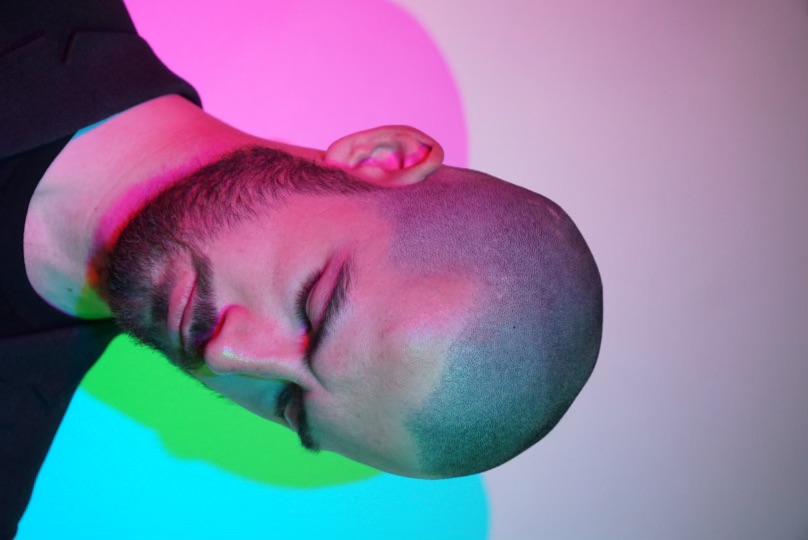 Clark Gray
Clark Gray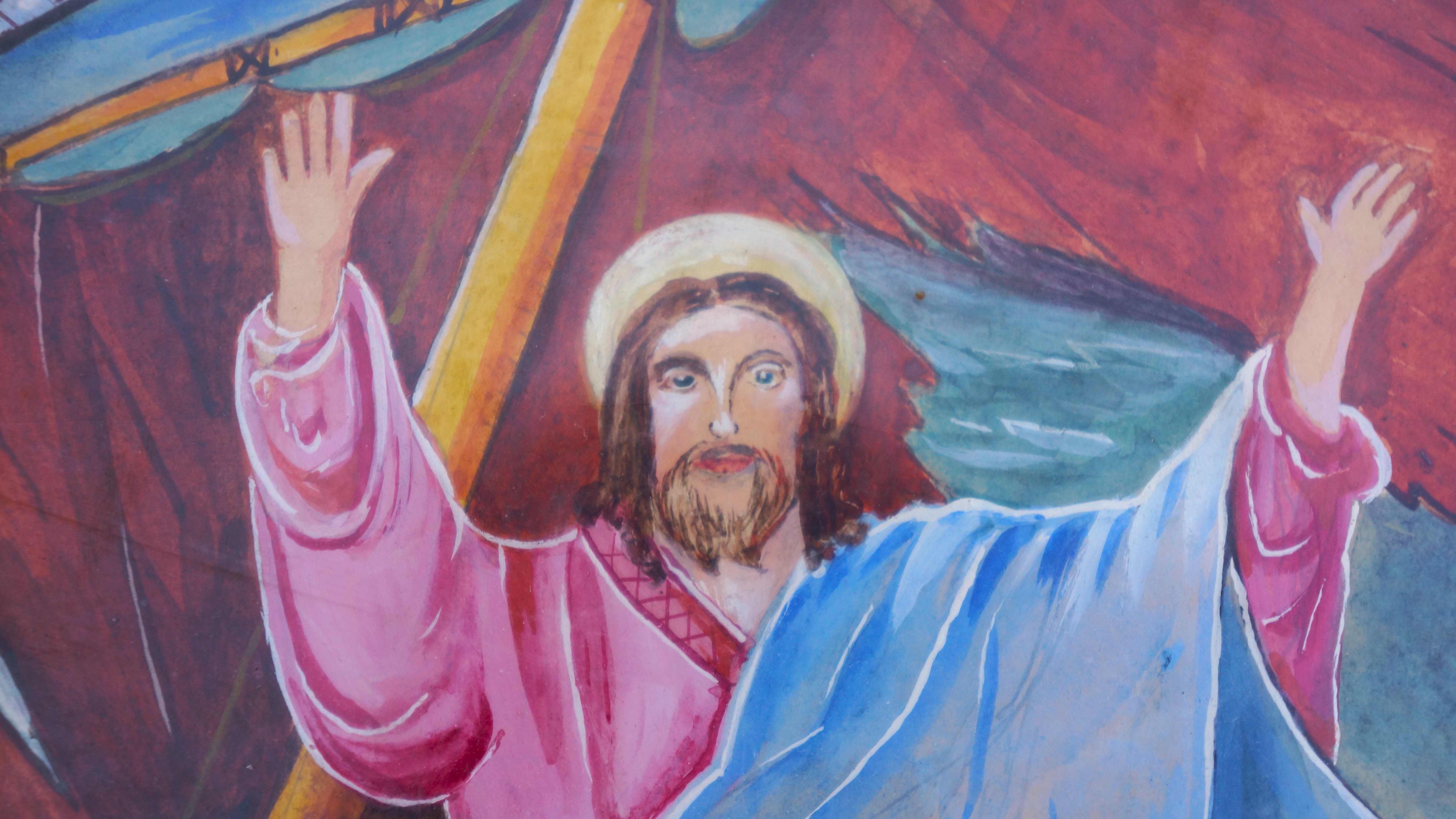
I’m the great-great grandson of David Clark, who lived in Edinburgh and was a painter himself. I grew up most notably with a the painting of Jesus Christ calming the storm. It was hung at the top of the staircase, outside our bathroom.
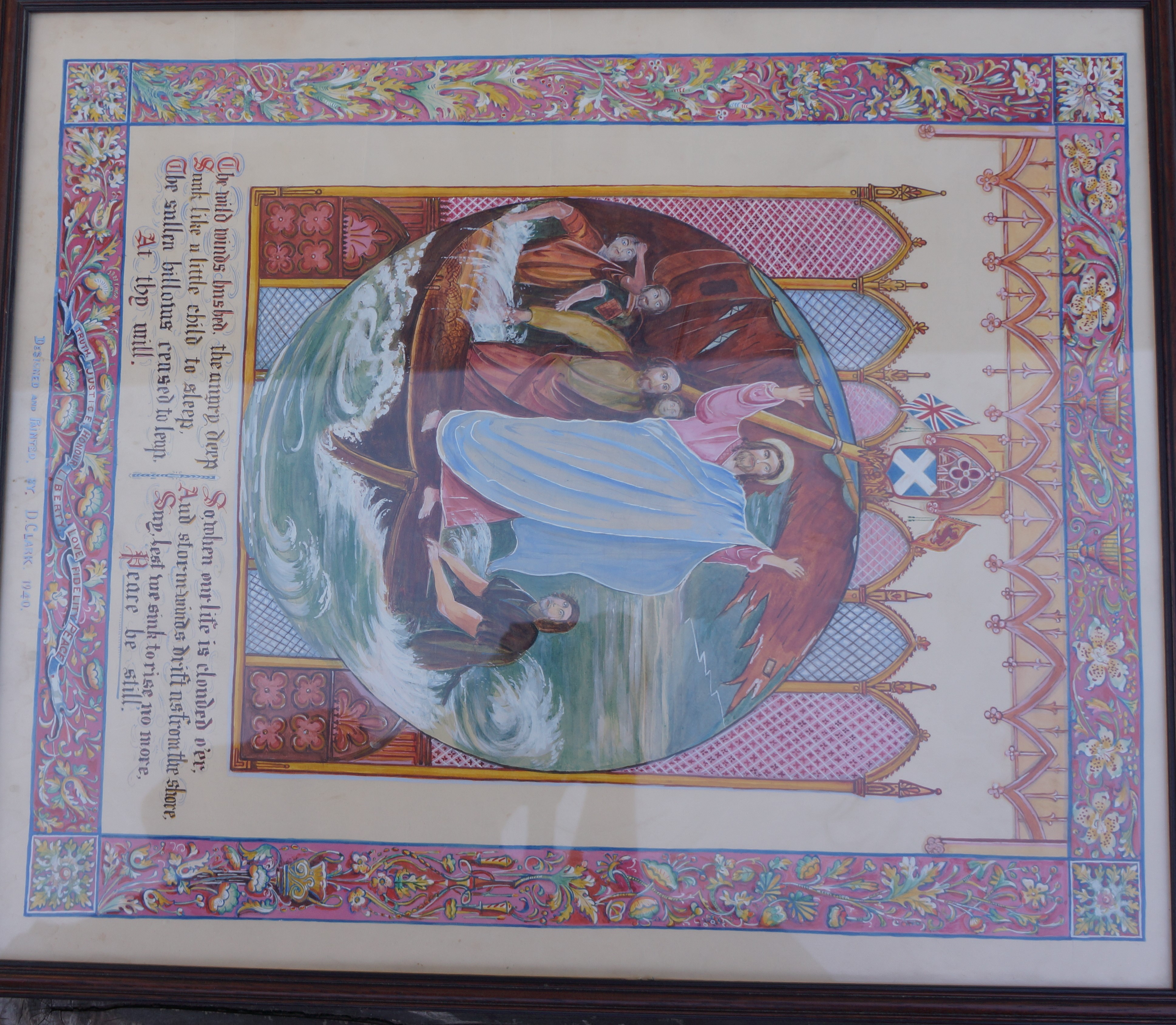
Nonetheless, Christ looked down at me above a set of staircases, and this painting became a constant reminder for me as I went to school, played rugby, went out with friends, till eventually I went to church as a Christian today.
Only recently did I pay attention to David Clark’s understanding of the miracle of Calming the Storm —through his writing of the Godfrey Thring’s 1861 hymn Fierce Raged the Tempest:
The wild winds bashed, the angry deep
Sunk like a little child to sleep,
The sullen billows ceased to leap,
At thy will.
So, when our life is clouded o’er,
And storm winds drift as from the shore,
Say, lest we sink to rise no more,
Peace be still
Poetry or a prayer, the message in clear. David Clark, a 19th century painter as a local village man spent time understanding the natural waters, the natural winds and in his prayer and painting he found himself learning how to see. Painting is learning how to see, and one learning how to see cannot help realise that seeing in a new way is indicative of knowing Christ. You’re life is not guaranteed to get better, you won’t have fame, or become rich, but you will see God and be humbled to understand that he can have a hand in your life—if you could only see it.
Like David Clark, I am also depicting Christ in my own ways. I have been working on multiple paintings which not only reveal my own story, but also the story of mankind through Jesus Christ.
Before I do, I need to study other depictions of Jesus Christ, and what better way to do that than to present to you some of the greatest works from some of the greatest visionaries and thinkers of the last four centuries.
Ludolf Backhuysen (b. 1630 Amsterdam), Christ In The Storm On The Sea Of Galilee
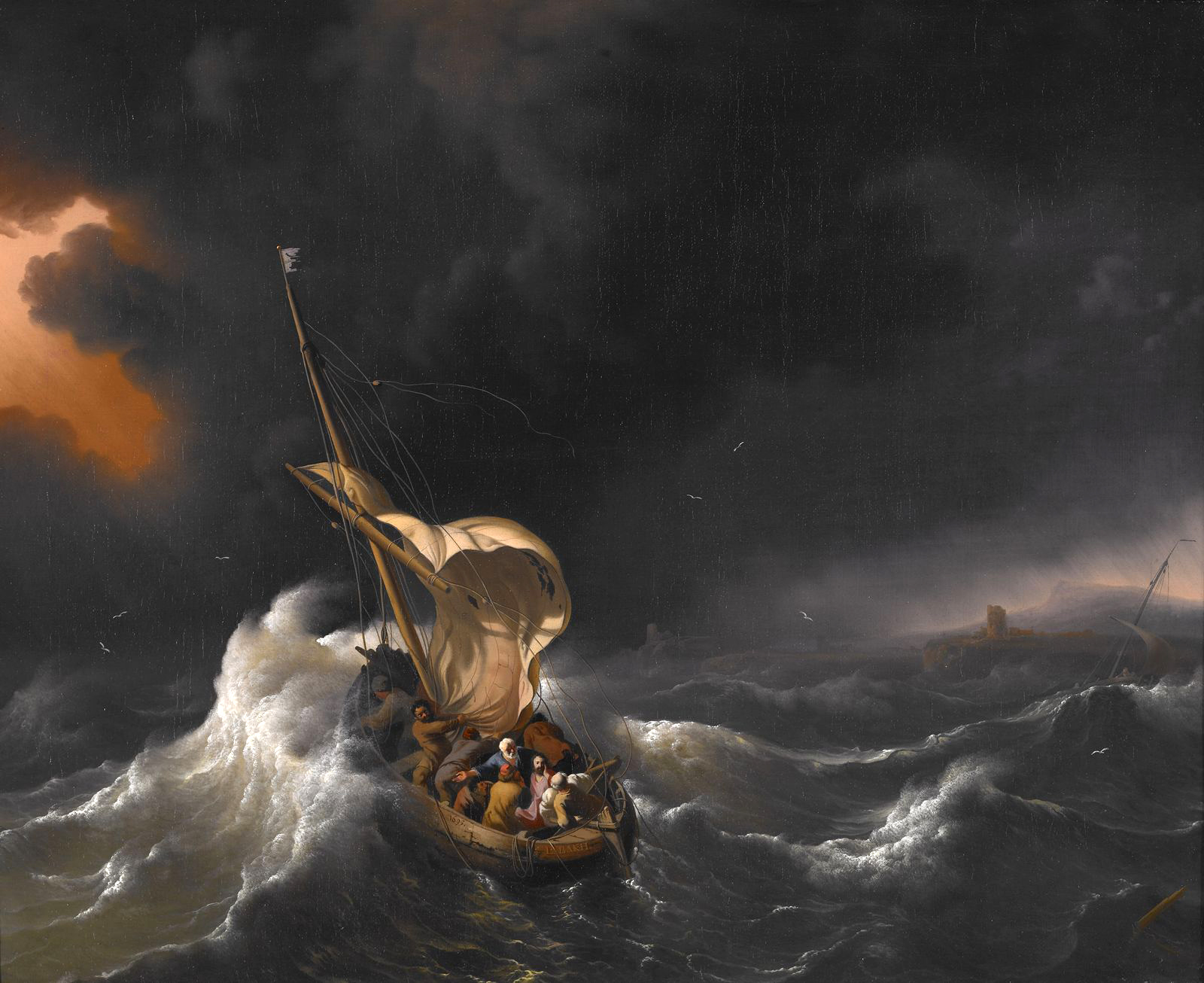
Ludolf Backhuysen was no stranger to the rough and stormy seas. As a art student, he would often place himself on a boat heading through stormy waters. By doing so, he was able to detail the nature of water and it's physical impact on boats as well as capture the rushing movements of the waves, the roaring calamities of its winds and the very terrors and fears experienced by his fellow Dutch sailors. From these accounts , Backhuysen gained a solid understanding the same terror which the disciples felt during their sail across the Sea of Galilee.
Salvador Dalí (b. 1904 Figueres, Spain), Christ of St John of the Cross
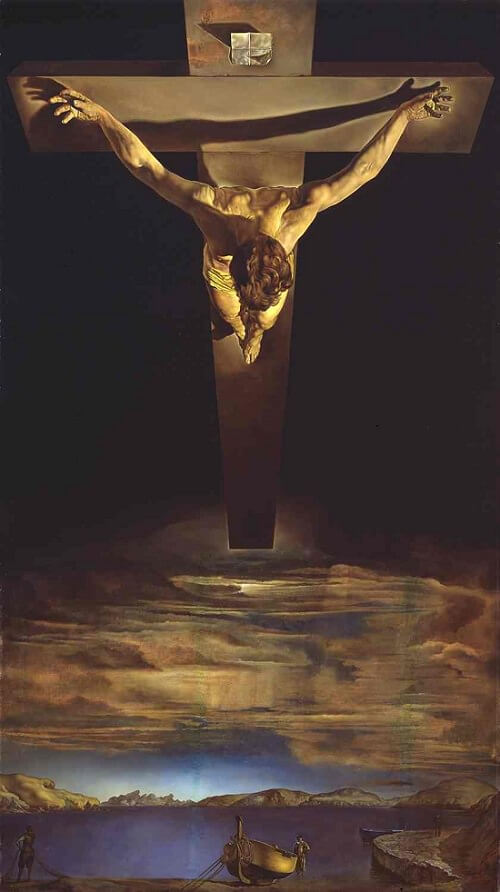
Salvador Dali, better known for his melting clocks, stick-legged elephants as a surrealist, Dali establishes another depiction of Christ. Dali was inspired by the 1550 drawing of Christ by St John of the Cross, a major Counter-Reformer in Spain.
Jesus is crucified, stretching down what looks like clouds and mountains. The angles and perception is skewed when glancing up to Christ (or down sat him), and across the water, most likely the Sea of Galilee with a fisherman idling around the water's edge. In this state, there is no blood, no pierced rip, no lashes and broken body. Instead, Dali offers a risen and cleansed depiction of Christ, a figure which rose again leaving the word in idle waiting, speechless to what he has done, and what he will do next.
Salvador Dalí (b. 1904 Figueres, Spain), Crucifixion (Corpus Hypercubus)
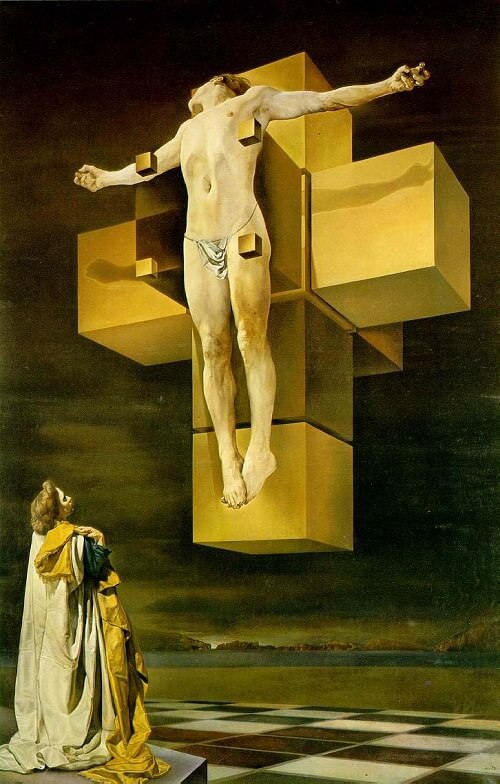
In addition to Christ of St John of the Cross, Dali expresses another depiction of Christ. Funnily enough, Dali's interest in Christ was sparked during the events of the 1940s and 1950s. With the advancements in quantum mechanics, nuclear physics, World War 2 and the development of the atomic bomb, Dali began to think about the mystical concepts of nuclear physics and dimensionality and how their implications were felt on Science, Culture and ultimately Christ.
Michelangelo (b. 1474,m Florence), Pietà
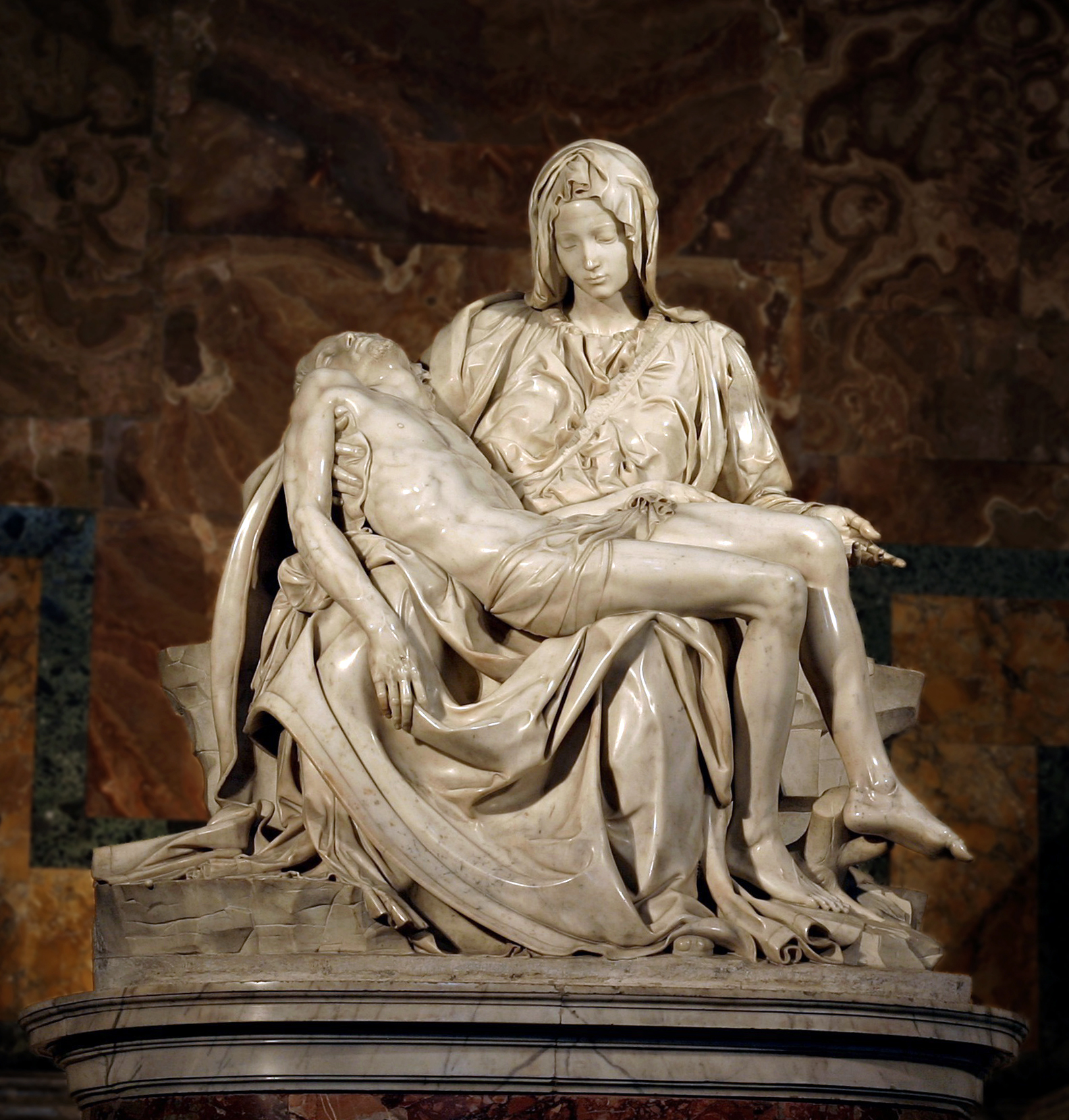
There is not enough words to describe Michelangelo and his global impact on sculpturing. His deep ties to the Catholic Church fuelled a lifelong dedication to creating works that vividly capture the emotions and stories central to the Christian faith. His evidence of passion, hard work and craft is a testament to his faith and to how much impact Christ had on his life.
Pietà (or Compassion) is a sculpture of Jesus Christ after being taken down from the cross. Its intricate detail in the cloth, anatomy, and the solemn expression of Mary, the mother of Jesus, holding her broken son in her arms, is remarkable. The good mother lets go. She rests her arms open in acceptance and understanding. The good mother releases her child, allowing him to bear the burden of the world. The good mother opens her arms, risking her child being broken by the world.
Ivan Kramskoi (b. St Petersburg, Russia) Christ in the Wilderness
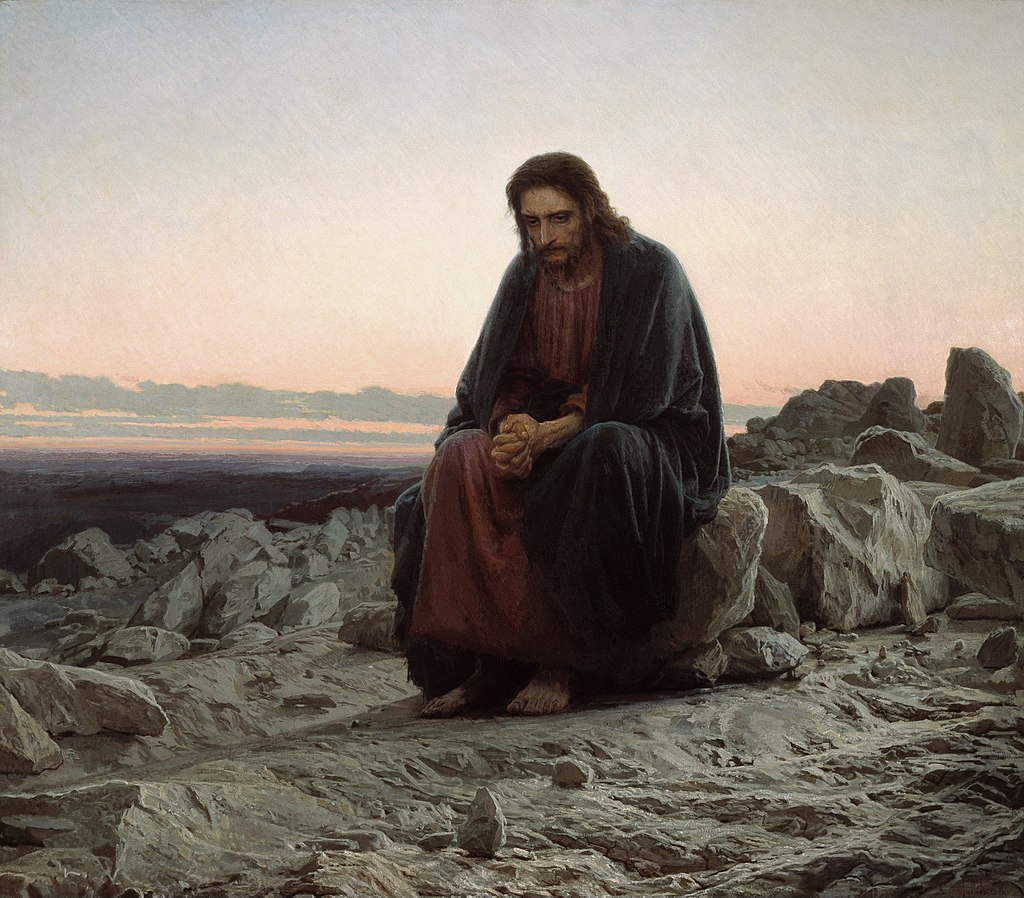
The temptations of Jesus Christ is laid out in great detail in both the Gospels of Matthew and Luke, and is briefly discussed in Mark. Jesus, driven by the Spirit, goes into the wilderness and fasts for 40 days. At the end of his fasting, he conversates with Satan who debates about his temptation into power and glory. Satan lays out three scenarios for Jesus to do:
Turn stones into bread to satisfy his hunger.
Leap from a high place and trust angels to catch him.
Bow down to Satan himself in exchange for dominion over all the kingdoms of the world.
Being the son of God, Christ lays out three responses of salvation:
Man does live by bread alone, but by the word of God. We do not live by food, money and material possessions, we walk by meaning and live by the Spirit.
Do not tempt the Lord. God is not for you to do as you please, nor is he for you to do whatever you want him to do.
Worship the Lord, and only the Lord. Glossa Ordinaria lays it out very clearly: "See the Devil’s pride as of old. In the beginning, he sought to make himself equal with God, now he seeks to usurp the honours due to God, saying, If you will fall down and worship me. Who then worships the Devil must first fall down." Do not fall down at the lowest, but rise and look up to God, for that is the aim and the path which is most worthy of living.
Ary Scheffer (b.1795 Dordrecht, Netherlands), The Temptation of Christ
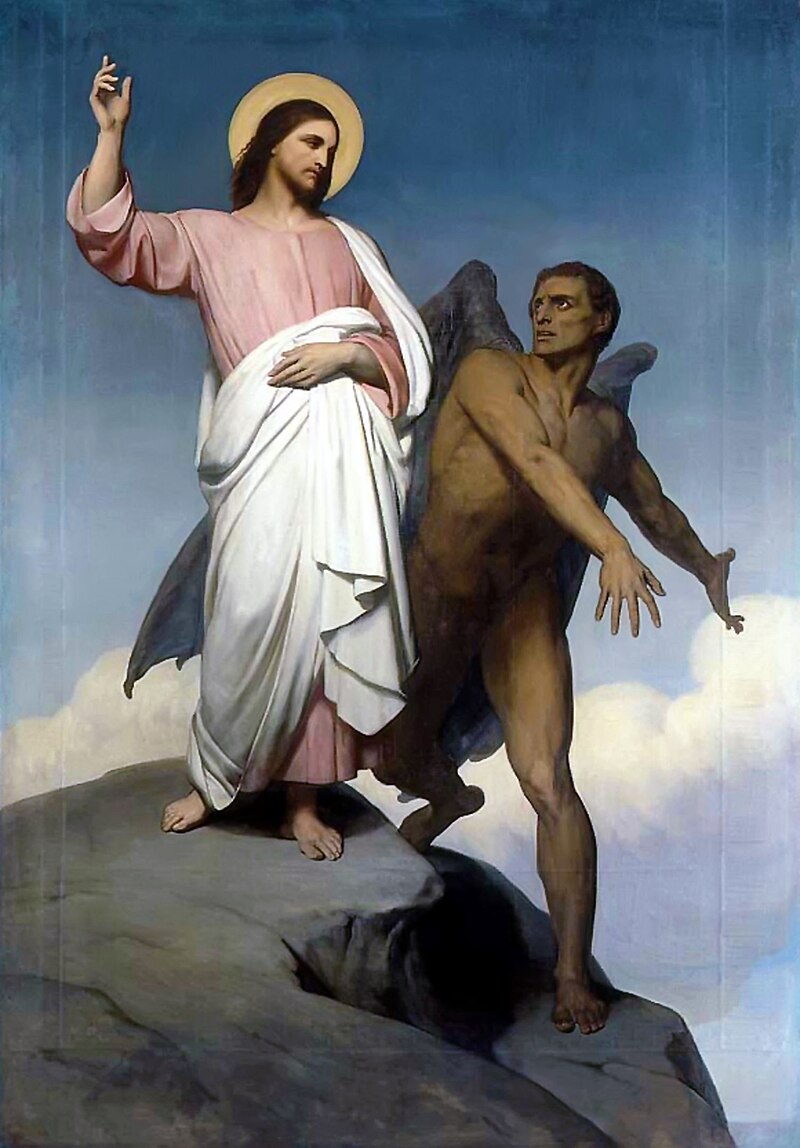
In Matthew 4:9, this is third and final temptation of Christ:
He said to him, "I will give you all of these
things, if you will fall down and worship me."
Mouth open wide, eyes looking up in desperation, Scheffer presents Satan as a desperate and pathetic creature, crouching in his own shadow, arms violently stretched out and below the light of the Lord Jesus Christ. The Lord softly raises his hand to the sky as if to say:
Worship the Lord your God, and serve him only
-Matthew 4:10
And Satan disappears, and the Lord's destiny and prophecy is fulfilled (Deut 8:3, Deut 6:13, Deut 6:16)
John Martin’s Trilogy
Here I've displayed not a 'human' depiction of Christ, but rather his effect on the world. Here, John Martin (b. 1789) is well known for his many landscape paintings, the settings of myths and the background of heroes. The Coronation of Queen Victoria (1839), Macbeth (1820), The Destruction of Pompei and Herculaneum (c. 1821), Seventh Plague of Egypt (1823), Joshua Commanding the Sun to Stand Still (c. 1840), The Destruction Of Sodom And Gomorrah (1852).
The Great Day of His Wrath (1851)
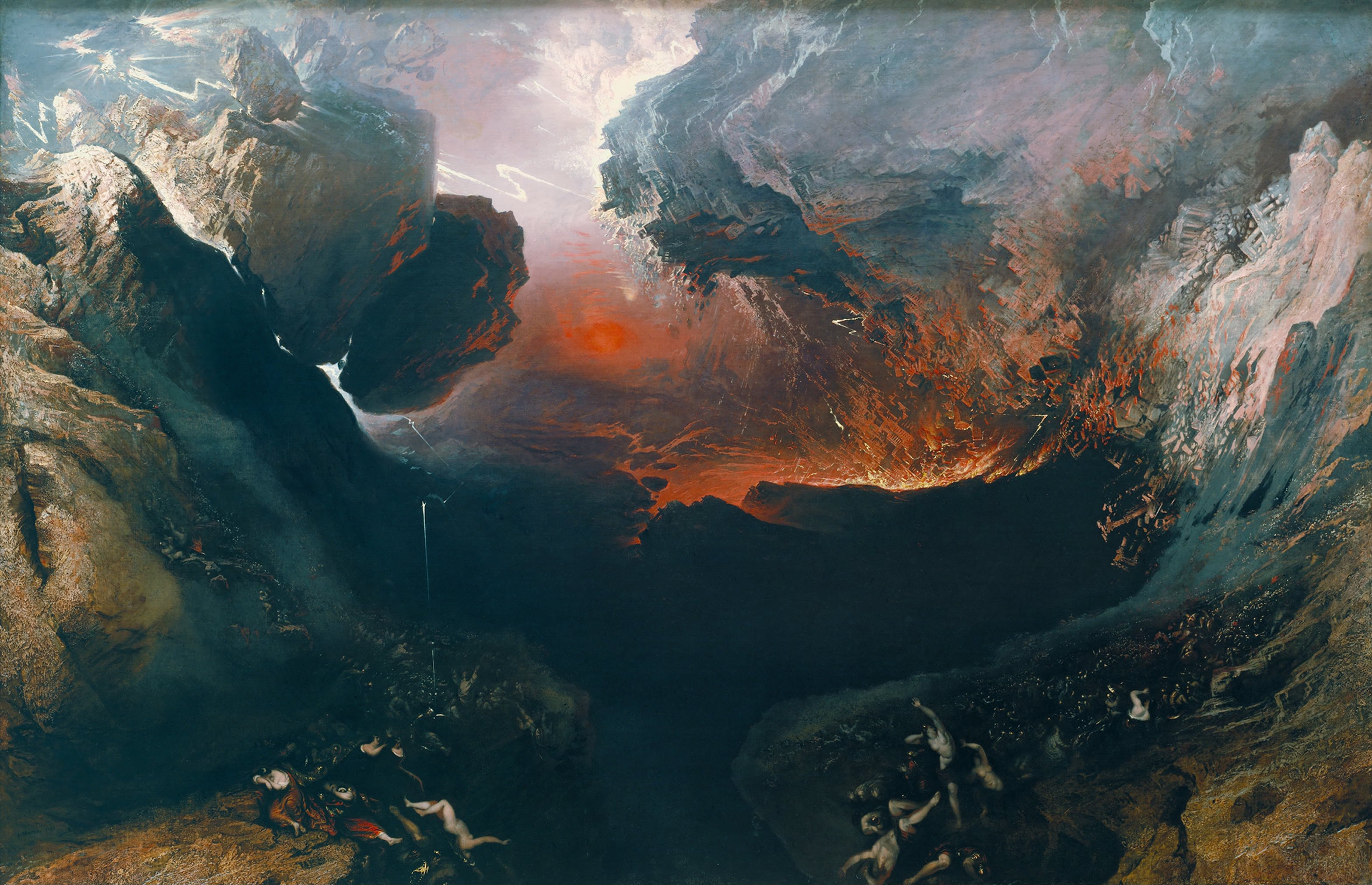
The Plains of Heaven (c. 1851)
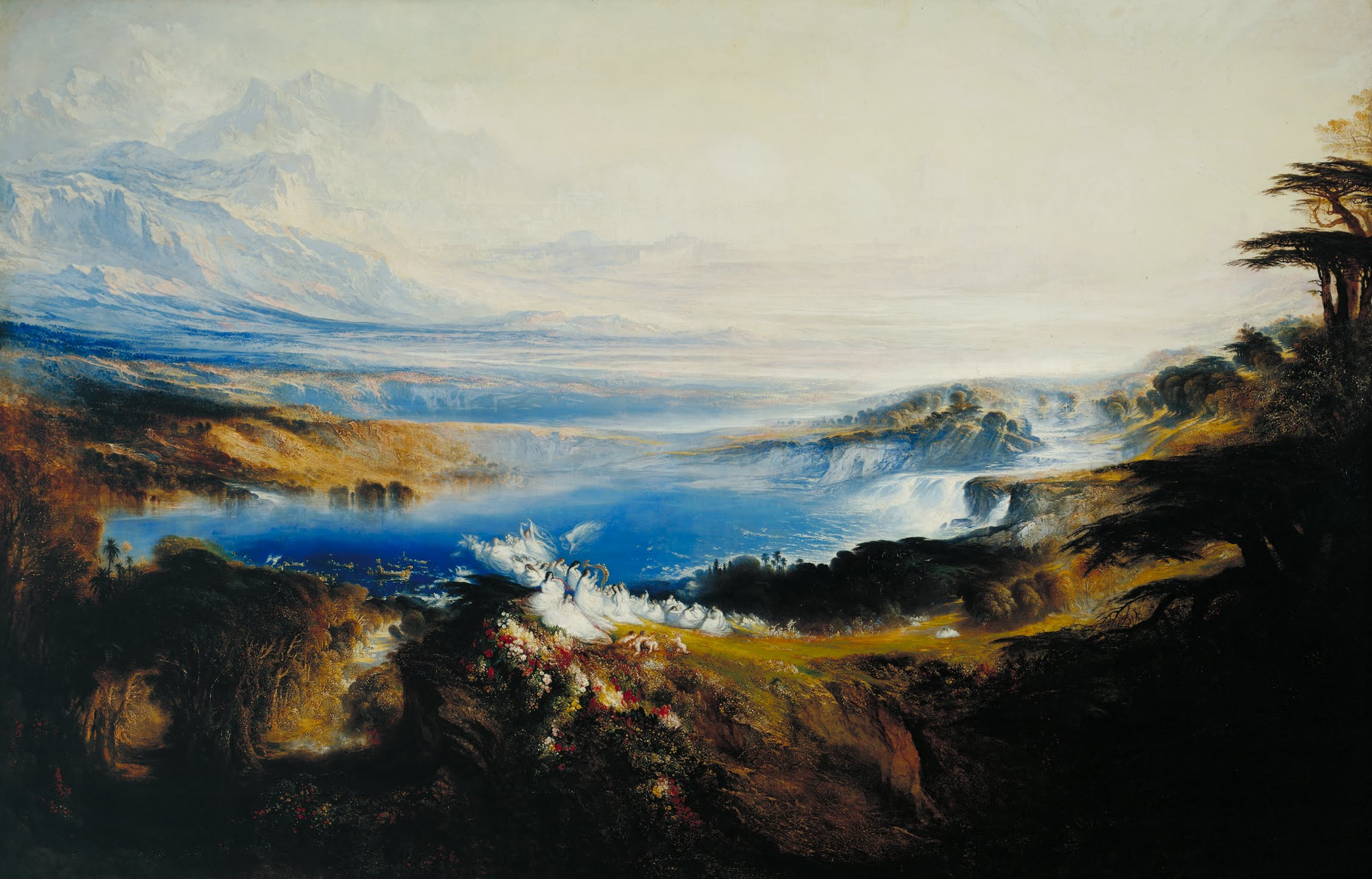
The Last Judgment (1853)
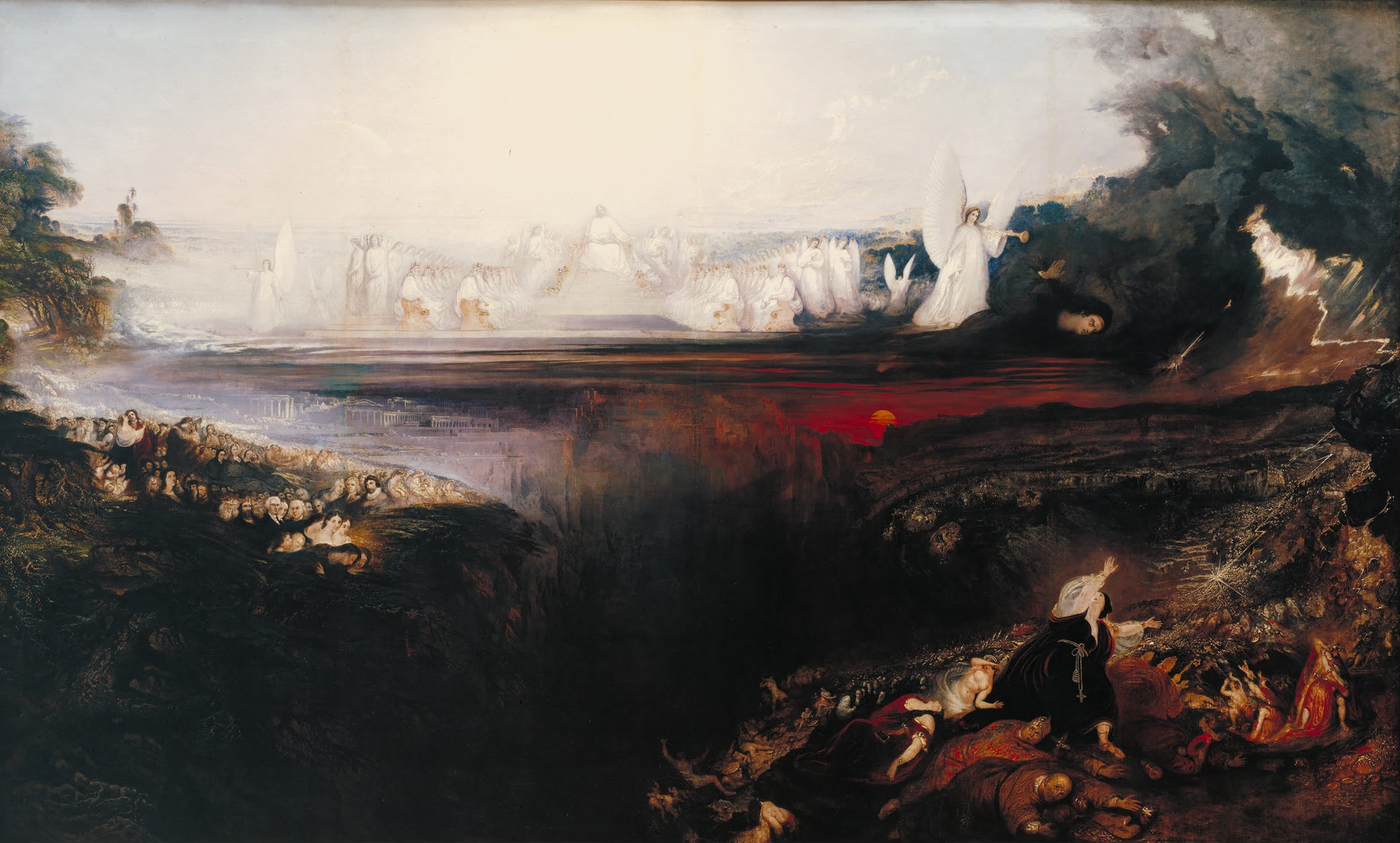
I hope you have enjoyed being taken into a world and wonder beyond your own. It excites me to find many of the artists here have established the theatre and the set the stage for the stories that we are all living today. I hope these paintings have allowed you answer to which story you are living in, and see that this reflection is not to far off it.
Subscribe to my newsletter
Read articles from Clark Gray directly inside your inbox. Subscribe to the newsletter, and don't miss out.
Written by
